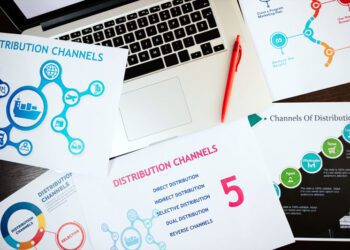Transportation planning in the modern era is more than just plotting routes on a map. It’s a sophisticated discipline that interweaves advanced software solutions, urban development considerations, and eco-friendly practices to meet today’s multifaceted needs. By examining the advanced strategies in transportation planning, understanding its role in shaping cities, and committing to sustainable practices, we can chart a course towards more efficient, responsible supply chains and communities.
Advanced Transportation Planning: Software and Strategies for Modern Needs
In the face of growing logistical demands, transportation planning has evolved to incorporate a suite of advanced software tools designed to optimize routing, reduce costs, and improve delivery times. These systems harness the power of big data, AI, and machine learning to analyze traffic patterns, predict delays, and propose the most efficient routes.
For businesses, this means the ability to dynamically adjust to real-time conditions, thereby minimizing disruptions and maintaining a high level of service. Fleet management becomes more responsive with the integration of GPS tracking, allowing for minute-by-minute adjustments in a world where time is currency.
Yet, software is only as good as the strategy it serves. Modern transportation planning also involves sophisticated strategies such as cross-docking, hub-and-spoke distribution models, and collaborative shipping, which consolidates loads from different businesses to fill trucks to capacity. These strategies not only cut costs but also reduce the environmental impact by lowering the number of vehicles on the road.
The Interplay between Transportation Planning and Urban Development
Transportation planning does not exist in isolation; it significantly influences and is influenced by urban development. As cities grow, the demand for efficient transportation systems becomes critical to the flow of goods and the quality of life for residents. Planners and developers must work in concert to design infrastructure that supports economic growth while addressing issues such as congestion and accessibility.
Integrated transportation planning considers the placement of distribution centers, access to multimodal transport options, and the impact of freight movement on urban environments. It’s about creating a synergy between commercial needs and the well-being of the community, ensuring that as cities expand, they do so with a vision for sustainable mobility.
Eco-friendly Transportation Planning for Sustainable Supply Chains
Sustainability is no longer a buzzword but a business imperative, especially in transportation planning. Eco-friendly strategies are not just about reducing emissions; they are also about streamlining operations to reduce waste and conserve resources.
This involves a multifaceted approach that may include investing in fuel-efficient or electric vehicles, optimizing load capacity to reduce the number of trips, and choosing routes that minimize fuel consumption. Additionally, collaboration with local stakeholders to support green logistics initiatives, like urban consolidation centers that reduce delivery frequencies to congested areas, can make a substantial difference.
Incorporating eco-friendly practices into transportation planning is not just good for the planet—it’s good for business. Companies that adopt green strategies often find that they can reduce costs, improve their brand image, and comply with increasingly stringent regulations.
Conclusion
Transportation planning stands at the crossroads of technology, urban development, and environmental stewardship. By leveraging advanced software, aligning with urban growth strategies, and embracing sustainability, transportation planning can propel supply chains and cities towards a more efficient and responsible future. The road ahead is clear: those who invest in smart, adaptive, and eco-conscious transportation planning will lead the way in the logistics landscape of tomorrow.




















